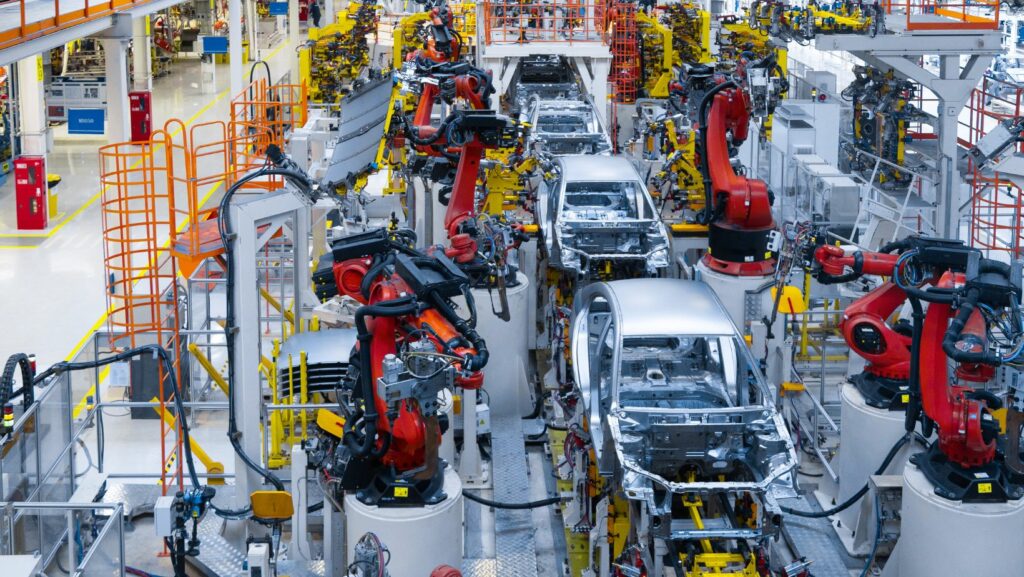In the fast-paced world of today, technology’s relentless march forward has left no industry untouched. The automotive sector is no exception. With the advent of state-of-the-art automotive systems technology, the landscape of transportation is being reshaped in ways that were once only dreamed of.
From self-driving cars to electric vehicles, automotive systems technology is the driving force behind these groundbreaking innovations. It’s not just about speed and efficiency anymore; it’s about creating a safer, more sustainable future for all.
Automotive Systems Technology

The breakthrough of automotive systems technology traces a path of transformation from rudimentary to revolutionary. Navigating from mechanical engines to introducing digital elements exhibits an intriguing chronology worth exploring.
In the early ages of automotive production, mechanical systems reigned supreme. Cars relied on physical components for operations and functionality was based on human dexterity. For instance, driving meant constantly maneuvering levers and pedals, interpreting gauges, and anticipating responses. But as technology evolved in the 20th century, so did the automotive sector.
Key Innovations That Shaped Modern Vehicles
Automotive systems technology has enabled several key innovations, each significantly changing the face of transportation.
Self-driving technology: The integration of complex algorithms, sensors, and artificial intelligence have materialized the concept of self-driving vehicles, one of the biggest leaps for automotive systems technology. Autonomous technology facilitates safety and efficiency in transport, reducing human error, the primary cause of road accidents.

Electric vehicles: The push for sustainable solutions has driven the popularity of electric vehicles (EVs). This innovation surpasses traditional combustion engines and minimizes environmental impact, showcasing innovative milestones in automotive systems technology.
Connectivity: Advances in wireless technology have opened a limitless potential for vehicle connectivity. Whether it’s Bluetooth pairing, mobile apps, or in-vehicle Wi-Fi hotspots, such enhancements are making driving not just a task, but a connected experience.
The evolution of automotive systems technology and its continued advancements are reshaping transportation’s future, reflecting a remarkable journey from raw mechanics to a merger with digital tech.
Impact of Electric Vehicles on Automotive Technology
Electric vehicles (EVs) have acted as disruptors, catapulting automotive systems technology into a new era. Focused on eco-friendly solutions, EVs have raised the bar for performance, connectivity, and sustainability in the transport sector.
Innovations in Battery Technology

Technological advancements in battery manufacturing have played a pivotal role in the proliferation of EVs. For example, the improvement of lithium-ion batteries, known for high energy density and long life cycle, has been central for the wider acceptance of EVs. Early EVs struggled due to limited range and long charge times, but modern innovations have quadrupled their range, with some electric vehicles now capable of ranges over 300 miles.
Software and Connectivity Enhancements
Alongside battery improvements, software enhancements in EVs enrich user experience and create an interconnected automotive ecosystem. One key advancement is Over-the-Air (OTA) updates, a feature allowing remote software updates without the need to visit a service center. Tesla, for instance, uses OTA to improve vehicle functionality, correct bugs, and even unlock new features.
Future Trends in Automotive Systems Technology
Emerging trends in automotive systems technology promise to reshape the landscape of transportation. Let’s explore notable trends such as Autonomous Driving Technologies and the Integration of AI and Machine Learning.
Leveraging advancements in sensors and software, these technologies integrate functionalities such as Adaptive Cruise Control, Lane Keeping Assist, and self-parking capabilities. Modern radar sensors, for instance, enable detection of nearby vehicles, cyclists, or pedestrians. Lidar technology, reinforcing this capability, creates detailed 3D maps of the environment. GPS feeds precise location data into the system, while intricate software processes all this multi-layered information, consequently guiding the vehicle’s movements.
With the integration of AI and machine learning, autonomous driving technologies are set to redefine transportation. As these advanced computational methods continue to evolve, they’ll enhance vehicle decision-making capabilities, paving the way for self-navigating vehicles. It’s clear the automotive industry is on a fast-paced journey, where technology is the driver, steering us towards a future of intelligent, connected, and sustainable transportation.



